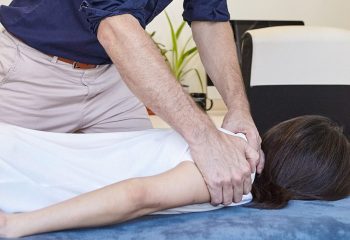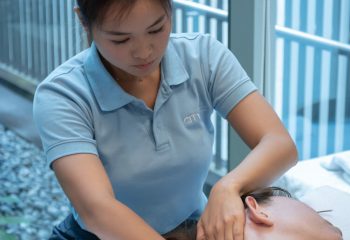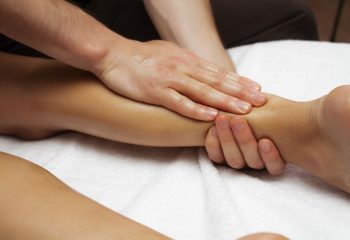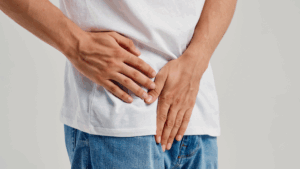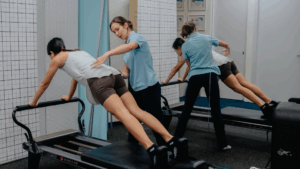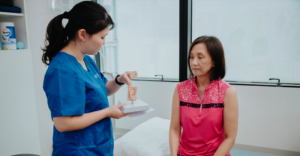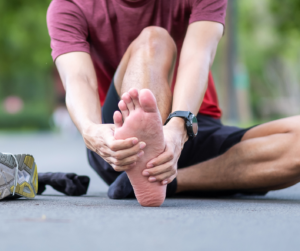Bunions are a common foot problem that can cause pain, discomfort, and impact your overall quality of life. If you are experiencing symptoms like a bump at the base of your big toe, it’s crucial to understand what bunions are and how you can effectively treat them. Here at City Osteopathy & Physiotherapy in Singapore, our expert physiotherapists and osteopaths specialise in treating various musculoskeletal conditions, including bunions. In this article, we’ll explore the causes, consequences, and effective treatment methods for bunions, including how a bunion corrector may help improve your condition.

What Are the Possible Causes of Bunions?
Bunions can develop due to a combination of factors. Understanding the root causes of bunions will help you take proactive steps in managing or preventing them.
Genetics
Genetics plays a significant role in the development of bunions. If your family members have bunions, there’s a higher chance that you may develop them as well. Inherited foot structures, such as flat feet or abnormal bone alignment, can put extra pressure on the big toe, leading to bunion formation over time. While you can’t change your genetic makeup, understanding its influence on your foot health can help you make smarter choices when it comes to footwear and other preventive measures.
Shoes That Cause Bunions
One of the most common causes of bunions is wearing shoes that do not fit properly. Tight, narrow shoes or high heels that squish your toes together can place undue pressure on the big toe joint, causing misalignment. This can lead to the development of bunions over time. Opting for shoes with a wider toe box and proper arch support is essential in reducing your risk of developing bunions. If you’re already experiencing symptoms, wearing bunion-friendly shoes can help alleviate pain and prevent further progression.
Arthritis and Other Health Conditions

Certain health conditions, such as arthritis, can also contribute to the formation of bunions. Inflammatory conditions like rheumatoid arthritis can cause joint deformities that affect the bones in your feet. Additionally, individuals with flat feet or abnormal walking patterns may be more likely to develop bunions, as their feet tend to place additional stress on the big toe joint. Addressing these underlying health issues can help manage and prevent bunion formation.
Consequences of Untreated Bunions
If left untreated, bunions can lead to various complications that can severely affect your foot health and mobility. Early treatment can prevent these consequences and help you lead a more active, pain-free life.
Bunion Pain and Discomfort
The most common symptom of bunions is pain, especially when walking or wearing shoes. As the bunion grows, the pressure on the big toe increases, causing irritation and swelling. The pain may start off as mild discomfort but can intensify over time, making it difficult to find comfortable shoes and engage in everyday activities like walking, exercising, or standing for long periods.
Bunion Complications
Untreated bunions can lead to further complications, including bunionettes (bony bumps on the little toe), hammer toes (abnormal bending of toes), and calluses. These conditions can make walking more painful and may result in difficulty fitting into regular footwear. The longer you wait to address a bunion, the more likely it is that additional issues will arise, further impacting your ability to move comfortably.
Difficulty Moving or Walking
As bunions worsen, they can significantly affect your mobility. The pain and swelling can reduce your range of motion, making it difficult to move your toes freely. This restricted movement can lead to compensatory walking patterns, which may put additional strain on your knees, hips, and lower back. Over time, this can affect your overall posture and cause discomfort in other areas of your body.
Bunion Correction Methods

There are several effective methods to manage and correct bunions, ranging from non-invasive treatments like bunion correctors to surgical options. Our physiotherapists and osteopaths at City Osteopathy & Physiotherapy can help you explore the most suitable solution based on the severity of your condition.
Invasive Treatments for Bunion Correction
In severe cases where conservative treatments have not provided relief, bunion surgery may be necessary. Bunion surgery aims to realign the bones in the foot and, in some cases, remove the bunion altogether. While surgery is usually considered a last resort, it can provide long-term relief for individuals with advanced bunions. It’s important to discuss the surgery options and recovery plan with your healthcare provider to determine if this is the right solution for you.
Non-Invasive Treatments for Bunion Correction
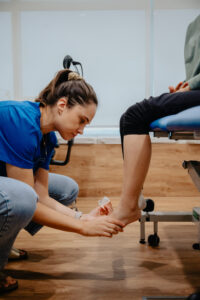
For many individuals, non-invasive treatments can be highly effective in managing bunions and preventing further progression. Our physiotherapists and osteopaths can offer several non-surgical solutions tailored to your specific needs.
1. Bunion Shoes in Singapore
Wearing proper footwear is one of the most effective ways to manage bunions and prevent further aggravation. Bunion shoes are specifically designed with a wider toe box to relieve pressure on the affected area. These shoes help to reduce pain and discomfort by allowing your toes to move freely. In Singapore, there are many stores offering bunion-friendly footwear to support your feet and reduce the risk of worsening the condition.
2. How to Shrink Bunions Naturally
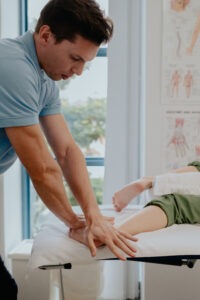
While bunions can’t be entirely reversed without surgery, there are natural ways to shrink the swelling and alleviate pain. Applying ice, using foot pads, and performing gentle stretches can help reduce inflammation and prevent the condition from progressing. Foot exercises aimed at strengthening the muscles around the toes and improving alignment can also be beneficial in managing bunions naturally.
Recommendations
If you’re experiencing symptoms of bunions, seeking treatment early can help prevent complications and improve your overall foot health. Here at City Osteopathy & Physiotherapy, our expert osteopaths and physiotherapists offer comprehensive assessments and personalised care. Whether you’re considering a bunion corrector, physiotherapy, or other non-invasive treatments, our team is here to help guide you toward a pain-free life. Book your consultation today and discover how physiotherapy & osteopathy can make your recovery journey for Bunion smoother, faster, and more comfortable.
FAQ
How to Reduce Swelling After Bunion Surgery: Post-Operative Care?
After bunion surgery, it’s essential to follow your healthcare provider’s post-operative instructions. To reduce swelling, elevate your foot regularly and apply ice packs as recommended. Wearing a compression bandage and avoiding putting weight on the affected foot for a period of time can also help speed up recovery. Your doctor will provide specific exercises to improve mobility once the swelling goes down.
What Are Examples of Bunion Therapy Exercises?
Bunion therapy exercises can help alleviate pain and improve the alignment of your toes. Some exercises include:
- Toe stretches: Gently stretching the toes can help improve flexibility and reduce stiffness.
- Towel scrunches: This exercise helps strengthen the foot muscles, improving overall foot function.
- Toe separation: Using toe separators or doing exercises that separate the toes can reduce the pressure on the bunion.
Is Toe Separators Useful for Bunions?
Yes, toe separators can be very useful for bunion treatment. By gently spreading the toes apart, toe separators help realign the big toe and reduce the pressure on the bunion. They can be used at home as part of your overall bunion management routine, along with other exercises and lifestyle changes. Regular use of toe separators can help alleviate discomfort and slow the progression of bunions.


